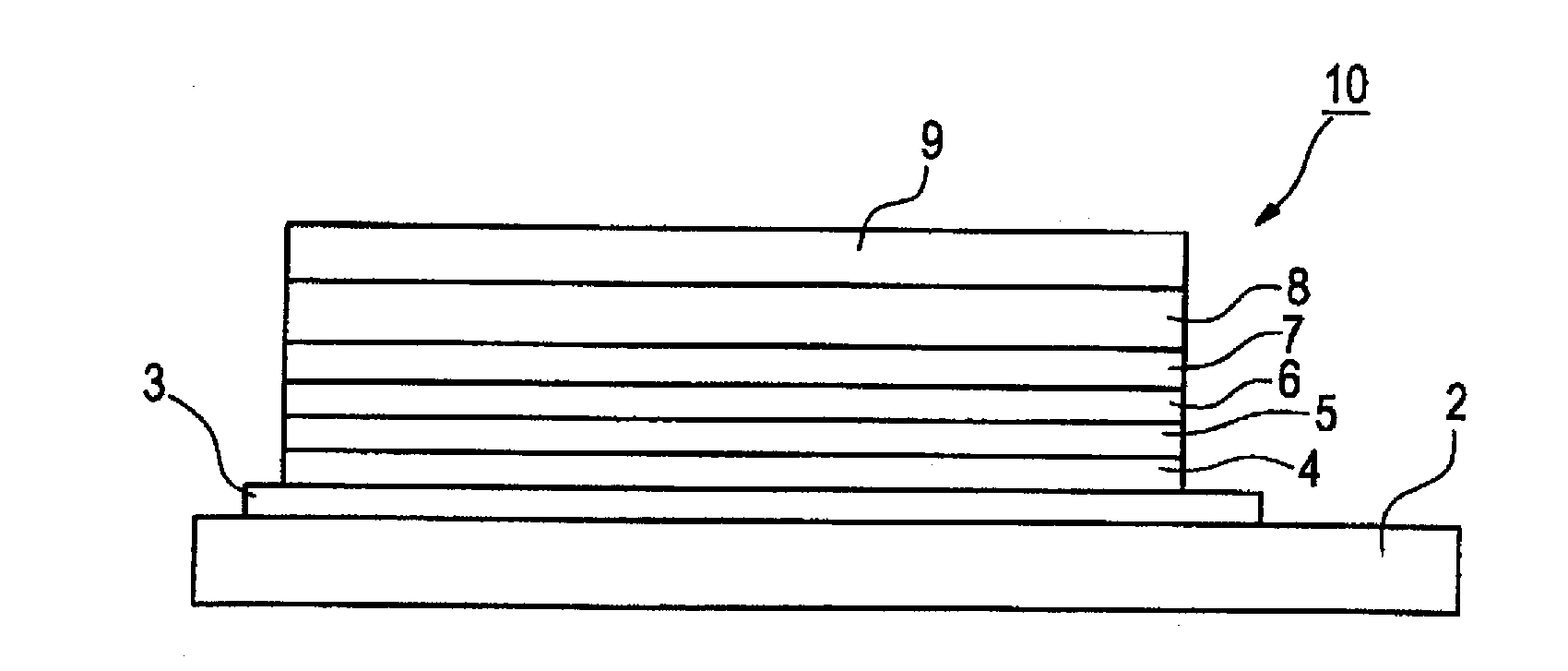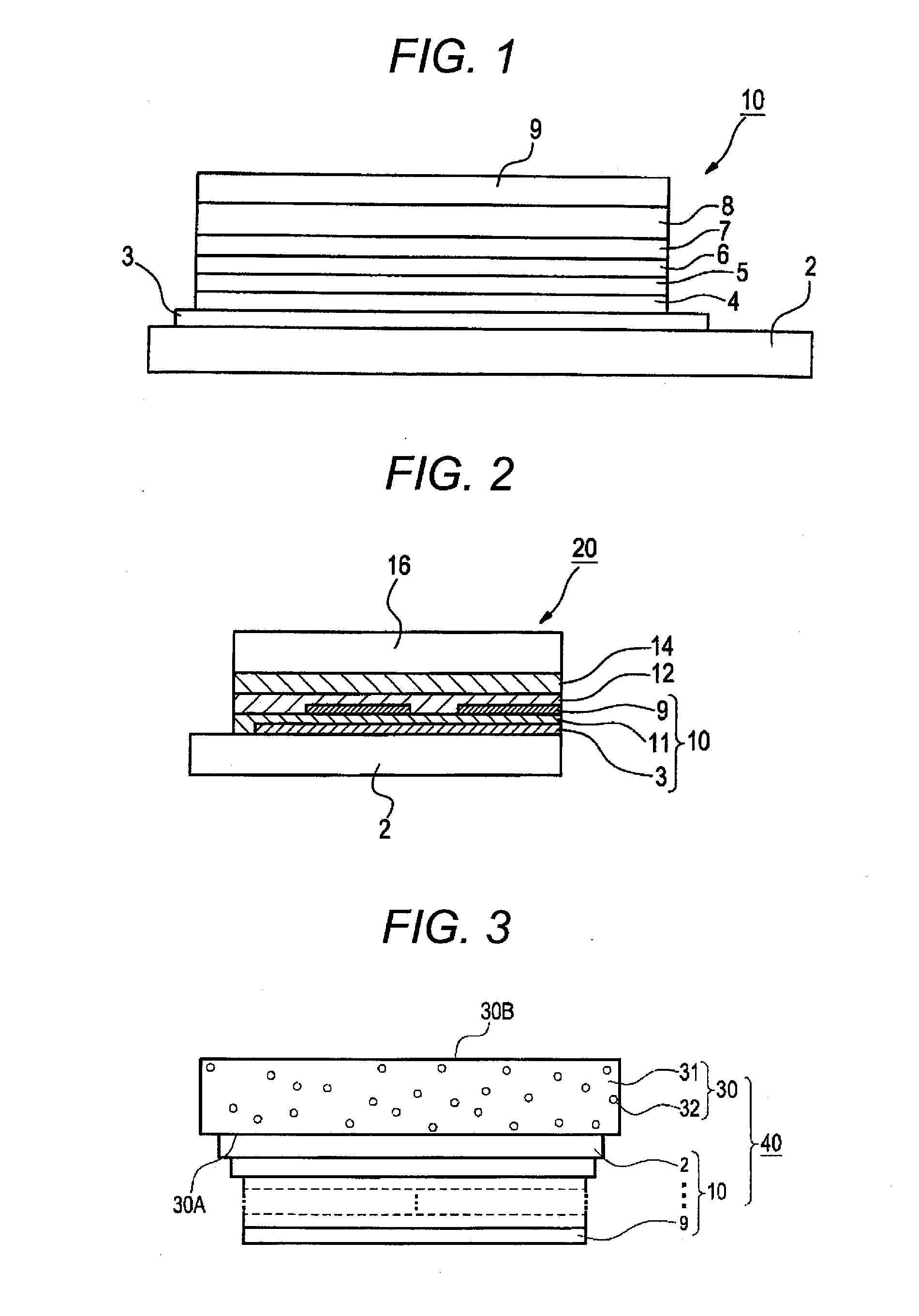Charge-transporting material and organic electroluminescence device
- Summary
- Abstract
- Description
- Claims
- Application Information
AI Technical Summary
Benefits of technology
Problems solved by technology
Method used
Image
Examples
example 1
Synthesis of Exemplified Compound 1
(Synthesis Method B: Comparative Synthesis Method)
[0331]Exemplified compound 1 of the charge-transporting material represented by formula (1) was synthesized and purified according to the method described in WO 05 / 085387, paragraphs [0074] to [0075]. The reaction formulae are shown below.
[0332]The obtained sample was subjected to sublimation purification (heating at 5×10−1 Pa under Ar flow), and fractions A, B and C were portioned out from the settled position of the sample at the time of recovery, from which each charge-transporting material was obtained. Fraction B is a region farther than fraction A and fraction C is a region farther than fraction B from the settled position of the sample. A material capable of vaporizing at a lower temperature is recovered from fraction B as compared with fraction A, and from fraction C as compared with fraction B.
[0333]Purification by HPLC and the contents of specific impurities of the obtained charge-transpor...
example 2
Manufacture of Device
[0340]A glass substrate having an ITO film (manufactured by Geomatec Co., Ltd., surface resistance: 10Ω / □)) having a thickness of 0.5 mm and a size of 2.5 cm square was put in a washer and subjected to ultrasonic washing in 2-propanol, and then UV-ozone treatment for 30 minutes. The organic compound layers shown below were deposited on the transparent anode (ITO film) in sequence by a vacuum deposition method.
First Layer: 2-TNATA and F4-TCNQ (mass ratio: 99.7 / 0.3); film thickness: 120 nm
Second Layer: α-NPD; film thickness: 7 nm
Third Layer: C-1; film thickness: 3 nm
Fourth Layer: H-1 and D-1 (mass ratio: 85 / 15); film thickness: 30 nm
Fifth Layer Electron-transporting material (the charge-transporting material manufactured in Example 1, shown in Tables 1 and 2); film thickness: 3 nm
Sixth Layer: BAlq; film thickness: 27 nm
[0341]Lithium fluoride in a thickness of 0.1 nm and metal aluminum in a thickness of 100 nm were deposited thereon in this order to obtain a cathod...
example 3
Manufacture of Device
[0349]Each device was manufactured in the same manner as in Example 2 except for carrying out deposition of the organic compound layers in the order of the following first layer to fifth layer.
First Layer: 2-TNATA and F4-TCNQ (mass ratio: 99.7 / 0.3); film thickness: 120 nm
Second Layer: α-NPD; film thickness: 7 nm
Third Layer: C-1; film thickness: 3 nm
Fourth Layer Host material as shown in Tables 3 and 4 (the charge-transporting material manufactured in Example 1) and light-emitting material (mass ratio: 95 / 5); film thickness: 30 nm
Fifth Layer: BAlq; film thickness: 30 nm
[0350]As a result of light emission of these devices, light emission resulting from the used light-emitting material was obtained from each device. Performances of each obtained device were evaluated by measuring external quantum efficiency and driving durability in the same manner as in Example 2. The results obtained are shown in Tables 3 and 4.
[0351]Concerning the value of driving durability sho...
PUM
 Login to View More
Login to View More Abstract
Description
Claims
Application Information
 Login to View More
Login to View More - R&D
- Intellectual Property
- Life Sciences
- Materials
- Tech Scout
- Unparalleled Data Quality
- Higher Quality Content
- 60% Fewer Hallucinations
Browse by: Latest US Patents, China's latest patents, Technical Efficacy Thesaurus, Application Domain, Technology Topic, Popular Technical Reports.
© 2025 PatSnap. All rights reserved.Legal|Privacy policy|Modern Slavery Act Transparency Statement|Sitemap|About US| Contact US: help@patsnap.com



